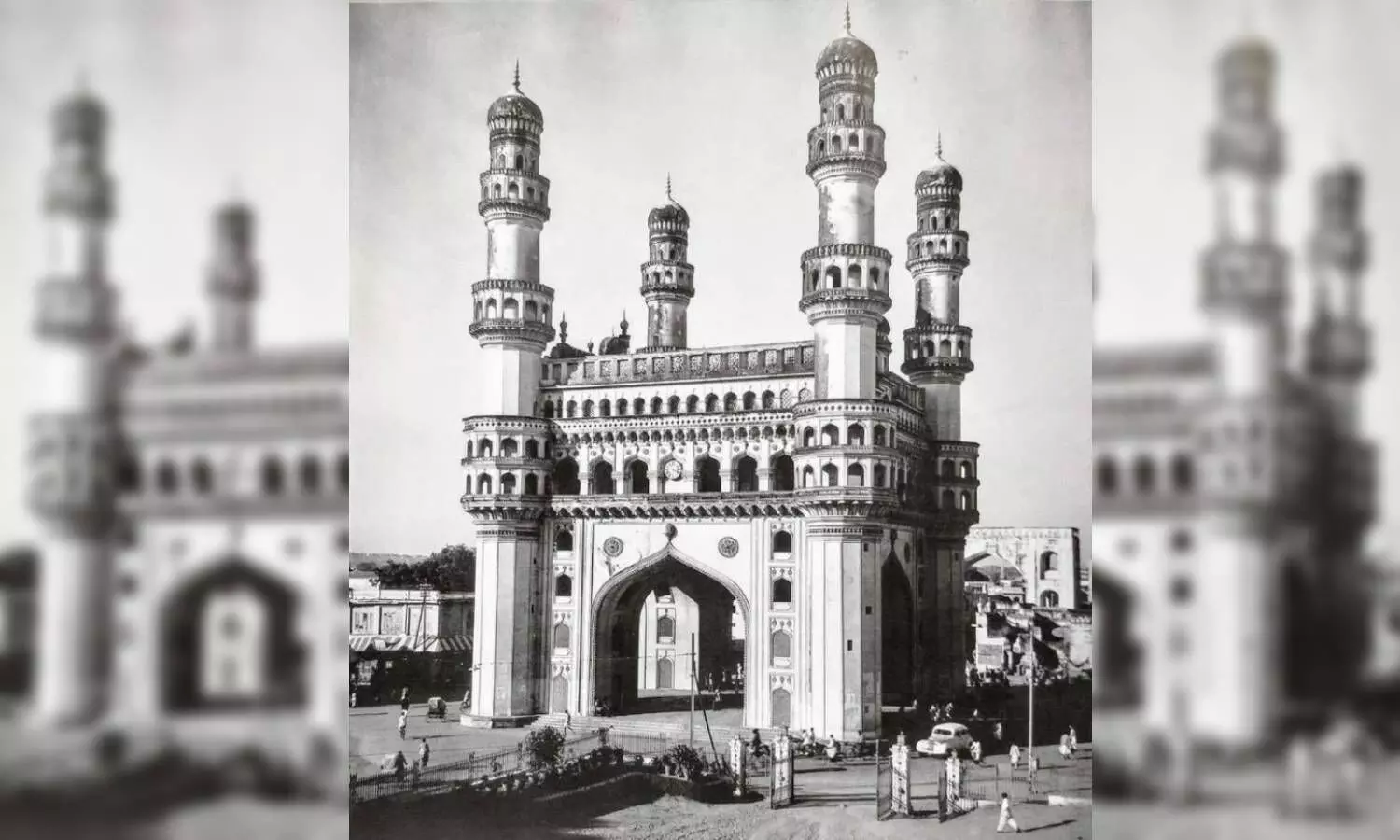Charminar turns 444: Hyderabad's iconic monument stands glorious even after 4 centuries
Charminar turned 444 years old on 31 July, according to the Hijri calendar. The Hijri calendar is also known in English as the Muslim calendar or the Islamic calendar which is a lunar calendar consisting of 12 lunar months in a year comprising 354 or 355 days.
By Amrutha Kosuru
Hyderabad: Charminar turned 444 years old on 31 July, according to the Hijri calendar. The Hijri calendar is also known in English as the Muslim calendar or the Islamic calendar which is a lunar calendar consisting of 12 lunar months in a year comprising 354 or 355 days. It is used to determine Islamic holidays, rituals, and more.
Why was Charminar constructed?
There are many theories regarding why the monument was constructed. "It is widely accepted that Charminar was constructed to commemorate the eradication of the plague," explained historian and advocate Syed Ghiyasuddin.
It is also said that this square-shaped structure with four pillars and intricate carvings was built in honor of Muhammad Quli Qutb Shah's wife. However, the real reason behind building Charminar is still not clear.
The four pillars of the monument are dedicated to the first four caliphs of Islam.
According to French traveler Jean de Thévenot who traveled to India in the 17th century, the reason for constructing Charminar is entirely different. According to his narration which is in sync with the Persian texts, Charminar was built to commemorate the start of the second Islamic millennium.
On the first Muharram in 1000H (1591), Muhammad Quli Qutb Shah, the fifth ruler of the Qutub Shahi Dynasty, prayed at Charminar to make the new city thrive the way fish thrive in the ocean. He prayed seeking to rid the walled Golconda city of plague. "His Munajat (prayers) were answered. Hyderabad, as we know, is always thriving with people with various cultures and ethnicities," Syed said.
Muharram is the first month of the Islamic calendar.
History of Charminar
Syed explained that Charminar's architecture was unique and different from Mughal architecture.
The Old City of Hyderabad was designed with Charminar as its centerpiece. Hyderabad's first bridge, Purana Pul, was constructed to connect Golconda and Hyderabad.
The construction began in 1589 and was completed in two years at a cost of Rs. 9 lakhs which was around Rs. 2 lakhs Huns/gold coins in those times. It is said to weigh around 14,000 tonnes with a 30-feet deep foundation. In 1670, a minaret fell down after being struck by lightning. It was then repaired at a cost of around Rs. 58,000 then. In 1820, parts of it were renovated by Sikandar Jah at a cost of Rs. 2 lakhs.
Charminar's architecture is inspired by the Shia "tazias." These Tazias were built in memory of Hussain, who was the son-in-law of Prophet Muhammad and who lost his life in the battle of Karbala.
Charminar was constructed by Mir Momin Astarabadi who was also the first Prime Minister during the reign of Mohammad Quli Qutb Shah. He is buried in a graveyard at the Mir Momim Ka Daira in Sultan Shahi near Charminar.
To commemorate the completion of 444 years, The Deccan Archive is conducting a week-long photography exhibition. The Deccan Archive is an initiative by a bunch of Hyderabadis to research, document, and promote factually correct and historically accurate narratives of the Deccan. "Today is the islamic new year. 444 years ago, charminar and the foundation for the city of Hyderabad as we know it was laid. This exhibition is a tribute to what charminar is. The exhibition consists of various pictures, maps and paintings of Charminar," said Sibghat Khan, Founder of the The Deccan Archive. The exhibition will be there until August 8.
Photo Credits: Younus Farhaan, Serish Nanisetti